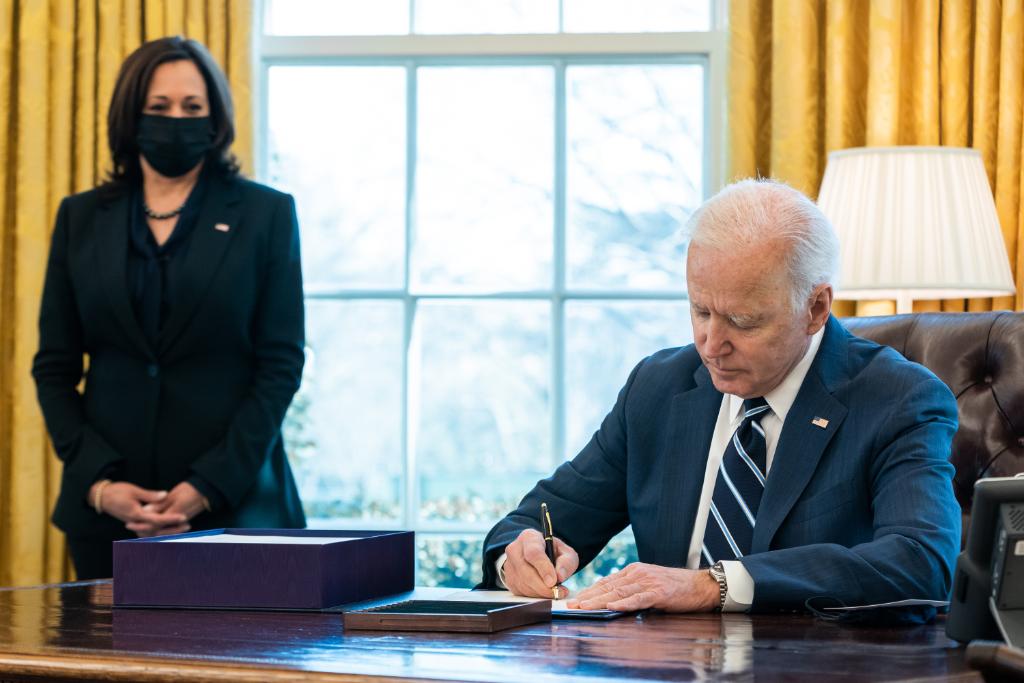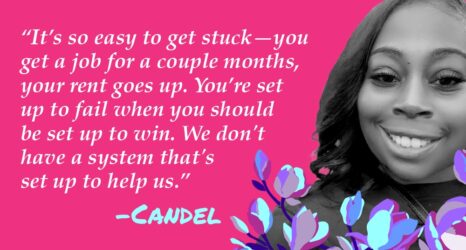Feminists are calling President Biden’s proposed $400 billion investment in caregiving “a great deposit” but “not nearly enough.”

On March 31, 2021, Biden proposed a $2 trillion American Jobs Plan—$400 billion of which would be allocated to the care economy to expand access to quality, affordable home- or community-based care for aging relatives and people with disabilities. The Biden administration says this proposed investment will help caregivers by raising their wages, creating stronger benefits and providing new caregiving jobs.
This proposal was born out of Biden’s campaign, where he stated he would invest $775 billion in the caregiving economy by allowing 12 weeks of paid family and medical leave, hiring three million Americans in care and education jobs, expanding Medicaid home- and community-based services, ensuring affordable child care and universal preschool, among other promises.
But many feminists—such as Josephine Kalipeni, deputy director at Family Values at Work, a national network helping to grow the movement for family-friendly workplace policies—say the proposed plan of $400 billion should only be seen as an initial investment, not a solution to the caregiving crisis.
“It’s a great deposit into what we actually need in the long term—it’s not nearly enough to get us to where we need to be,” said Kalipeni at the Building a Caregiving Economy for All webinar sponsored by The 19th on June 9, which brought together Kalipeni and 23 other speakers ranging from politicians, caregivers and activists to business professionals to discuss the vital role of caregiving in our society and economy.
According to a 2020 AARP caregiving report, more than one in five Americans are unpaid caregivers. However, these statistics don’t account for the millions of Americans who became informal or formal caregivers since the beginning of the pandemic. With women accounting for approximately 58 percent of all minimum wage workers earning less than $15 an hour, many women have been disproportionately impacted by COVID-19—facing the weight of supporting their loved ones.
“I didn’t have anyone to turn to,” said Adarra Benjamin, a home care worker, during the webinar. Since the pandemic hit, Benjamin has only had one client—a stark contrast to the 12+ hour days she used to work taking care of four clients. Unsupported, she was left to fend for her and her clients’ safety on her own, traveling over 15 miles to find gloves, hand sanitizer and other protective equipment.
“Seeing as though we go in and care for people, why is it though we’re the ones that are least cared about?” Williams asked.
Williams is one of countless caregivers—both paid and unpaid—who have felt the same way. The average caregiver in the United States is a woman, aged 49, who works outside the home and provides 20 hours of unpaid labor to a family member per week. The gendered differences of caregiving work are apparent—and the resulting physical, emotional and financial challenges must be addressed.
Although 59 percent of caregivers face some kind of financial burden, women caregivers are two and a half times more likely to live in poverty than their male counterparts. Women of color are especially vulnerable: A study conducted by the University of Pittsburgh found Black and Brown women experienced greater adverse impacts from the pandemic—including food insecurity, social isolation, financial strain, anxiety and depression, among other issues.
By not treating caregivers as an essential pillar to our society, Maria Shriver, founder of The Women’s Alzheimer’s Movement, asked, “Who is going to care for us as we grow older?”
With COVID-19 weakening a system—the caregiving economy—that was already fragile, experts at the panel called for a rebuilding of the caregiving infrastructure. “We can see things which have been true for a long time but which have been hidden and they aren’t hidden anymore. We can’t be who we expect to be as a nation with a robust economy without these structures in place,” said Cecilia Muñoz, senior advisor to New America, a civic innovation platform in the United States.
The reality is, Kalipeni said, the programs Biden’s plan is proposing to invest in—such as community-based care—have been underfunded for decades.
“Our economy and our systems are set up in such a way where even if you do everything right, without the additional investments in our care infrastructure, we’re setting up generations upon generations to age into poverty, to get to a retirement age, without a retirement infrastructure, without the care they need that is culturally competent, affordable and quality and still having to make tough decisions,” said Kalipeni.
That said, Biden’s investment are a great next step to helping care workers like Benjamin. Benjamin grew up watching Black women caregivers, helping her understand how essential caregivers are not only to our society but to our economy. Despite her “love for it all,” she stated that she continues to struggle with the “lack of pay, the lack of protection, and the lack of respect” that comes with caregiving.
“You really have to love what you do because your pay doesn’t reflect it,” said Benjamin. “The respect doesn’t reflect it. And we’re not protected so that shows, in a sense, that we feel like we aren’t essential.”
With Biden’s new plans, she hopes people will begin “to look at us as workers … not babysitters” and start to adequately address the challenges of caregiving work. As Ai-Jen Poo, director at Caring Across Generations, said, “We have more momentum…and more champions than ever before.”
The webinar ended with one clear message: The caregiving crisis is not an “intractable problem..it is utterly solvable,” as Muñoz stated. “Any individual has the capacity to make a difference.”
Up next:





